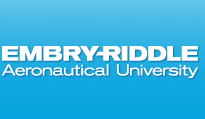Is this project an undergraduate, graduate, or faculty project?
Undergraduate
group
What campus are you from?
Daytona Beach
Authors' Class Standing
Kylie Boyer, Senior Ahnika Gee, Senior Anthony Raduazzo, Junior Gideon Noonan, Freshman Richie Thayer-Sapp, Freshman Conner Callahan, Freshman Anayah Smith, Junior Jerrett Usui, Freshman Ginevra Mazzini, Freshman Cole Gresham, Sophomore
Lead Presenter's Name
Kylie Boyer
Faculty Mentor Name
Stephen Gillam
Abstract
Exoplanet research has expanded rapidly, with 5,780 exoplanets confirmed and 7,241 candidates under investigation as of October 2024. While space-based missions are essential for detecting exoplanets, ground-based observations are critical for confirming these findings through extended star monitoring. To facilitate this, NASA offers the EXOplanet Transit Interpretation Code (EXOTIC), a tool accessible to researchers at all experience levels. Using multi-aperture photometry on data from the MicroObservatory telescopes, we analyze light curves for periodic flux dips, which may indicate a transiting exoplanet. Currently, our team is focused on analyzing NASA-provided data, with plans to extend our collaboration with the Museum of Art and Sciences (MOAS) in Daytona Beach. The data collected at MOAS will primarily focus on exoplanet candidates, which we aim to analyze using EXOTIC’s advanced tools to confirm potential exoplanets. Our project will contribute to expanding the catalog of confirmed exoplanets and provide valuable insights to the broader scientific community. This student-led, unfunded project with NASA offers a unique opportunity to advance exoplanetary science through hands-on research.
Did this research project receive funding support from the Office of Undergraduate Research.
No
Exploring Exoplanets: Analysis of NASA’s EXOTIC Data
Exoplanet research has expanded rapidly, with 5,780 exoplanets confirmed and 7,241 candidates under investigation as of October 2024. While space-based missions are essential for detecting exoplanets, ground-based observations are critical for confirming these findings through extended star monitoring. To facilitate this, NASA offers the EXOplanet Transit Interpretation Code (EXOTIC), a tool accessible to researchers at all experience levels. Using multi-aperture photometry on data from the MicroObservatory telescopes, we analyze light curves for periodic flux dips, which may indicate a transiting exoplanet. Currently, our team is focused on analyzing NASA-provided data, with plans to extend our collaboration with the Museum of Art and Sciences (MOAS) in Daytona Beach. The data collected at MOAS will primarily focus on exoplanet candidates, which we aim to analyze using EXOTIC’s advanced tools to confirm potential exoplanets. Our project will contribute to expanding the catalog of confirmed exoplanets and provide valuable insights to the broader scientific community. This student-led, unfunded project with NASA offers a unique opportunity to advance exoplanetary science through hands-on research.


